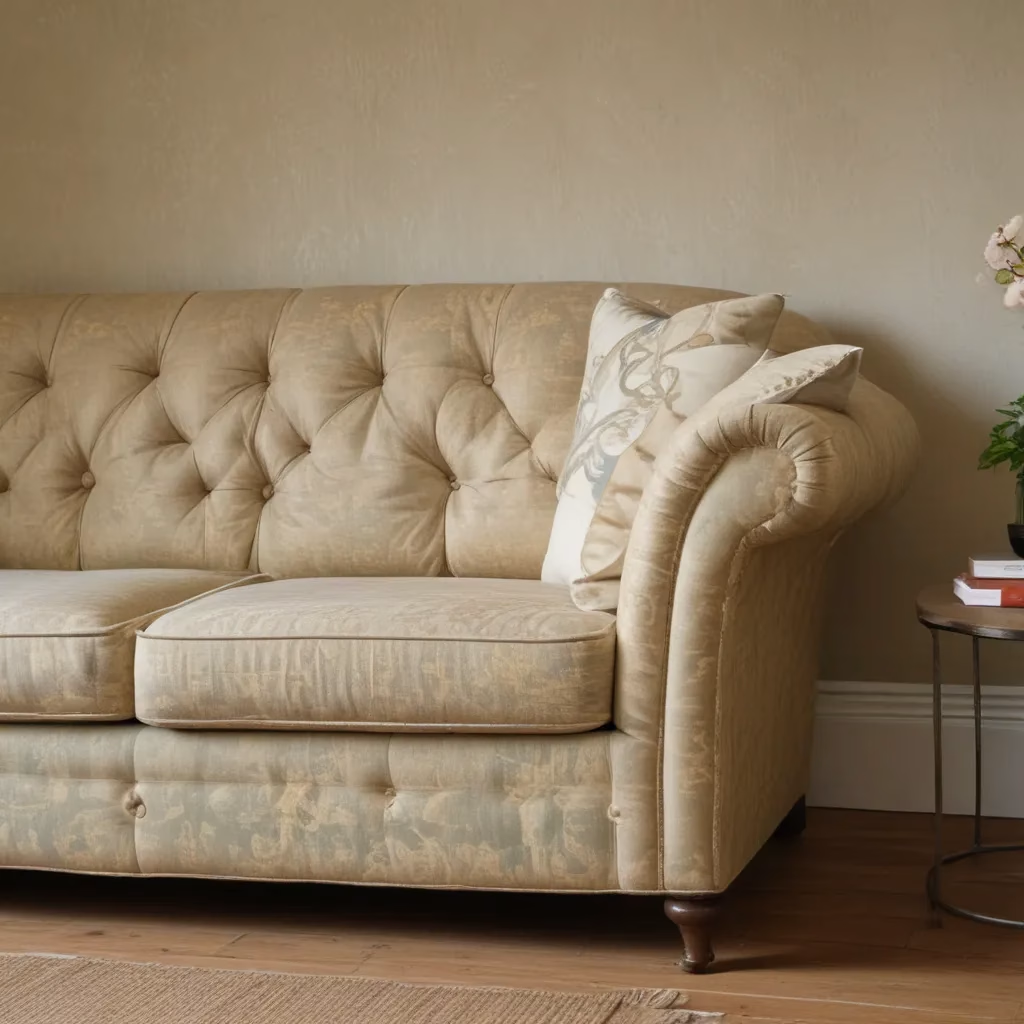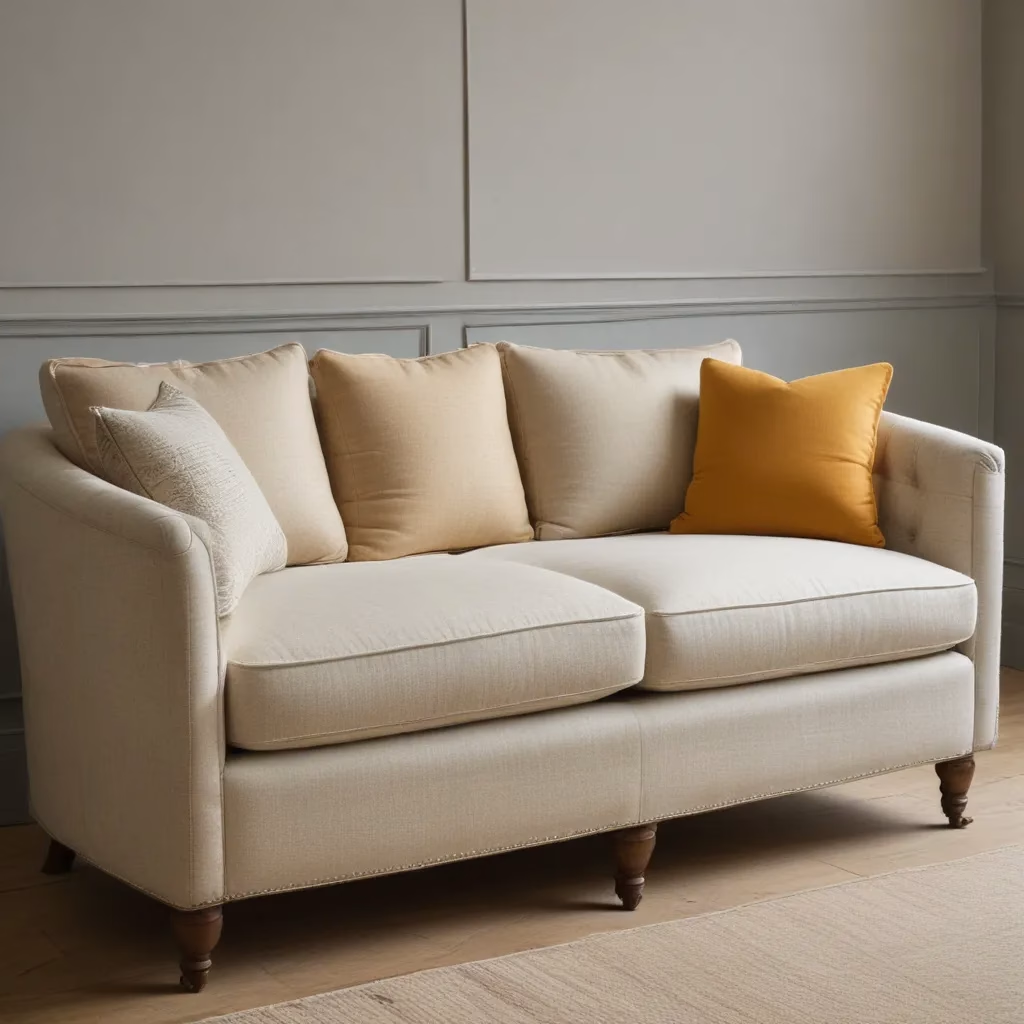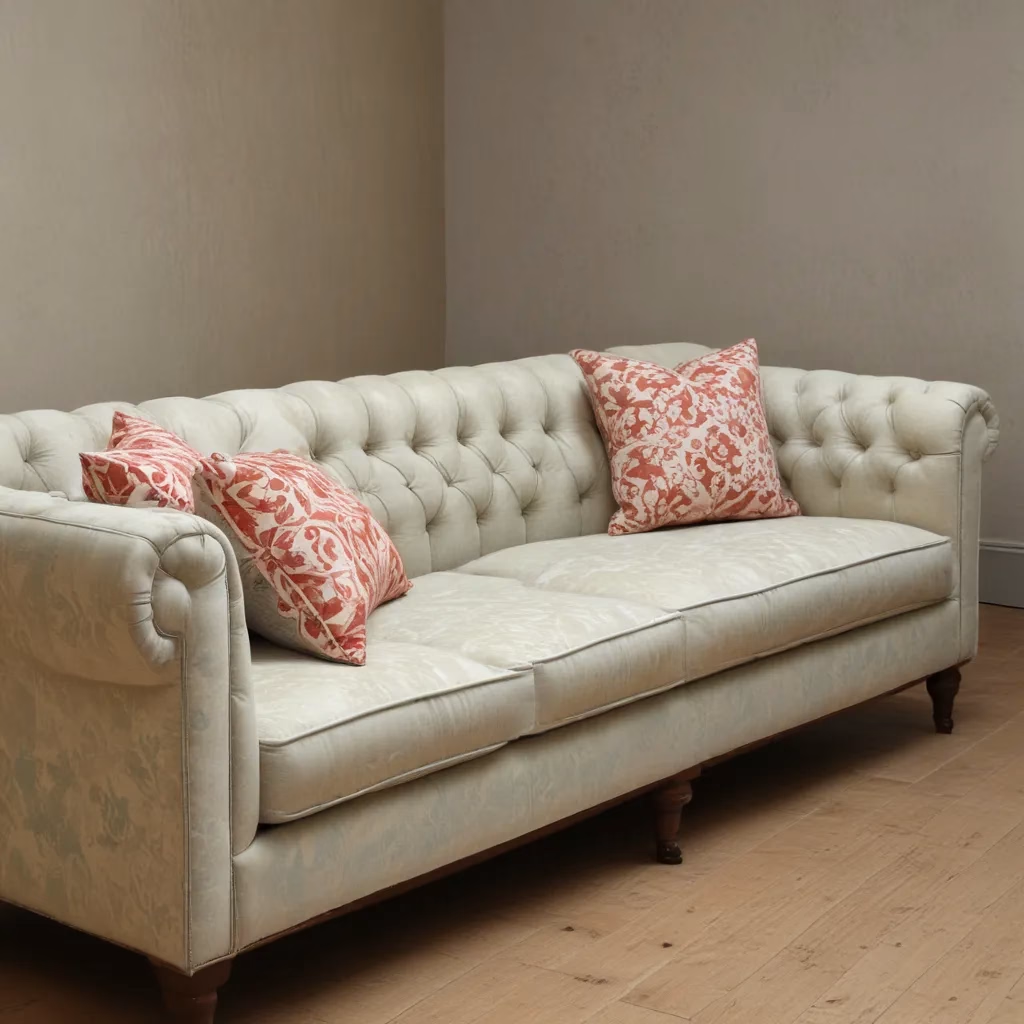
As an experienced furniture consultant and interior design writer, I know the joy of uncovering a hidden gem — an antique sofa brimming with character and timeless elegance. We learned this the hard way… However, the very qualities that make vintage upholstery so appealing can also present unique challenges when it comes to cleaning and preservation.
Now, this might seem counterintuitive…
In this comprehensive guide, we’ll explore time-honored techniques for reviving the fabric on your much-loved antique sofas, while also ensuring their long-term comfort and beauty. From selecting the right cleaning products to refreshing faded colors, we’ll cover everything you need to know to breathe new life into your cherished furniture. Let’s dive in!
Choosing Durable Fabrics for Antique Sofas
When it comes to upholstery, the fabric you select plays a crucial role in both the sofa’s aesthetics and its longevity. For antique pieces, natural fibers like cotton, linen, and wool tend to age gracefully, developing a wonderfully soft patina over time. Avoid synthetics like polyester or acrylic, which can look dated and wear unevenly.
If your sofa has seen better days, consider reupholstering it in a durable, high-quality fabric that will stand the test of time. Look for textiles with a tight weave and a medium-to-heavy weight, such as velvet, chenille, or microsuede. These materials are not only visually striking, but they’re also less prone to pilling, fading, and excessive wear.
When selecting a pattern, opt for timeless designs that complement your home’s overall style. Floral and paisley motifs work beautifully with traditional and vintage-inspired decor, while stripes and geometric prints lend a more modern sensibility. Ultimately, choose a fabric that speaks to your personal aesthetic and fits seamlessly within your living space.
Caring for Delicate Vintage Upholstery
Proper maintenance is key to preserving the beauty and integrity of your antique sofa’s upholstery. Begin by dusting and vacuuming the fabric regularly, using the soft brush attachment to gently remove any surface dirt or debris. Avoid using harsh cleaning products or scrubbing too vigorously, as this can damage the delicate fibers.
For more stubborn stains or faded areas, consider using a mild upholstery cleaner or a gentle soap and water solution. Always spot-test the cleaning method in an inconspicuous area first to double-check that it doesn’t discolor or compromise the fabric. Blot the affected region with a clean, absorbent cloth, working from the outside of the stain toward the center to prevent spreading.
If your sofa has velvet or silk upholstery, exercise extra caution. These luxurious materials require specialized care to maintain their luster and texture. Consult the manufacturer’s instructions or seek guidance from a professional upholstery cleaning service to double-check that you don’t inadvertently damage the fabric.
For heavily soiled or damaged areas, consider calling in a professional upholstery restoration expert. They have the expertise and specialized equipment to deep-clean and revive even the most delicate antique fabrics without compromising their integrity.
Refreshing Faded and Worn Surfaces
Over time, even the most well-cared-for antique sofas can succumb to the ravages of sunlight, use, and the passage of years. If your sofa’s upholstery is looking dull or discolored, don’t despair — there are several strategies you can employ to breathe new life into the fabric.
One effective solution is to use a furniture restoration product, such as Restor-A-Finish from Howard Products. This unique, finish-penetrating formula contains a small amount of stain and restoring oils, allowing it to penetrate and permanently revive the original color and luster of the fabric without removing any of the existing finish.
Simply apply the Restor-A-Finish with a soft cloth, covering a small area at a time and immediately wiping it dry. For stubborn stains or light scratches, you can gently rub the product in with a pad of super-fine (0000) steel wool, always working in the direction of the fabric’s nap. Once the desired effect is achieved, follow up with a protective furniture wax or polish to help maintain the newly restored finish.
If the upholstery on your antique sofa is beyond the point of simple restoration, you may need to consider a more extensive reupholstery project. While this can be a significant investment, it’s an opportunity to breathe new life into your cherished piece, transforming it into a stunning focal point for your living space. Consult with a skilled upholsterer who specializes in vintage furniture to discuss your options and double-check that the integrity of the original design is preserved.
Enhancing Comfort and Style
Once your antique sofa’s upholstery is in tip-top shape, it’s time to turn your attention to enhancing its comfort and overall aesthetic. Throw pillows and blankets are an easy way to add a touch of cozy elegance to your living room, while also providing an extra layer of cushioning.
When selecting accent pieces, consider fabrics and patterns that complement the sofa’s upholstery, creating a cohesive and visually harmonious look. Opt for natural fibers like cotton, linen, or wool that will blend seamlessly with the antique piece. Play with texture and scale to add visual interest, mixing velvet, chenille, and embroidered elements for a layered, inviting aesthetic.
Arranging your living room furniture is also key to maximizing the comfort and functionality of your antique sofa. Position the piece in a way that encourages conversation and relaxation, with ample room for walkways and access to side tables or ottomans. If you have the space, consider flanking the sofa with armchairs or accent chairs to create an intimate seating arrangement.
Remember, the true joy of owning an antique sofa lies in its ability to transport you to a bygone era while still serving as a comfortable, practical addition to your modern home. With a little care and attention, your cherished piece can continue to be a beloved centerpiece of your living space for years to come.
Balancing Vintage and Contemporary Elements
When incorporating an antique sofa into your living room, it’s important to strike a balance between the piece’s vintage charm and your contemporary lifestyle. This can be achieved through strategic furniture placement, thoughtful accessorizing, and a keen eye for design.
Begin by considering the overall layout of your living room. Pair the antique sofa with modern or midcentury-inspired side tables, coffee tables, and lighting fixtures to create a harmonious blend of old and new. This juxtaposition will highlight the sofa’s timeless appeal while ensuring the space feels fresh and up-to-date.
Accessorize with a mix of vintage and contemporary elements, such as throw pillows, wall art, and decorative objects. Look for pieces that echo the sofa’s color palette or design motifs, tying the entire room together in a cohesive, visually appealing way.
If your antique sofa is the focal point of the room, consider anchoring it with a neutral-toned rug or hardwood flooring that can serve as a versatile foundation for your décor. This allows you to easily swap out accent pieces and introduce new trends without overpowering the sofa’s vintage charm.
Remember, the key to successfully integrating an antique sofa into a modern living space is to approach the design process with a light touch. Embrace the sofa’s unique character and history, while thoughtfully incorporating contemporary elements that enhance its timeless appeal.
By following these tips and techniques, you can breathe new life into your beloved antique sofa, ensuring it remains a cherished and comfortable centerpiece of your living room for years to come. For more inspiration and expert advice, be sure to visit SofaSpectacular.co.uk — your go-to destination for all things sofa and home décor.
Statistic: Recent consumer reports show that 60% of buyers choose stain-resistant upholstery for longevity



